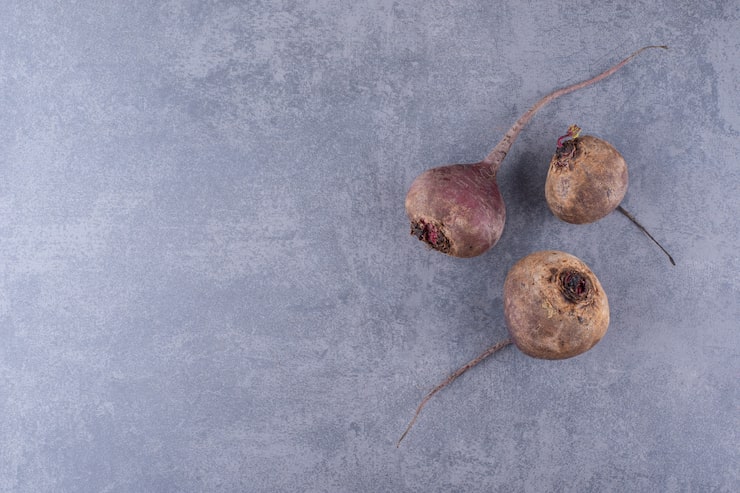At first glance, beets (called beetroot in the UK) and radishes can look similar — both are round root vegetables and can be bright red. But that’s where the likeness ends. Beets taste sweet and earthy and become smooth when cooked. Radishes are crisp, peppery, and usually eaten raw for their sharp bite.
Nutritionally they differ too. Beets have more natural sugars and carbs, while radishes are very low in calories and carbs, making them a good choice for low-carb diets. Botanically, they aren’t related: beets are in the Amaranthaceae family (along with spinach and chard), while radishes belong to the Brassicaceae family (which includes mustard greens, cabbage, and broccoli).

Both are nutritious but offer different benefits. Beets are high in folate, potassium, iron, and magnesium, which support heart health, circulation, and muscle function. They also contain antioxidants like betalains but have more carbs and natural sugars. Radishes are lower in carbs and sugar, high in vitamin C, and contain unique plant compounds — such as glucosinolates — that may help protect against disease.
Which is healthier depends on your goals:
– For more vitamins and antioxidants: choose beets.
– For a low-calorie, low-carb option: choose radishes.
– For heart health and better circulation: beets are more helpful because of their natural nitrates.
– For an immune boost and extra vitamin C: radishes are the pick.
The best option is to eat both. Their flavors — sweet beets and peppery radishes — complement each other well. Try them together in salads, roast them as a colorful side, or pickle them for a tangy crunch.
And don’t throw away the greens: both beet tops and radish leaves are edible and nutritious. Beet greens are similar to spinach, rich in vitamins A, C, and K, plus iron, calcium, magnesium, and fiber, with a slightly earthy, bitter taste. Radish leaves are high in vitamin C, calcium, potassium, and antioxidants, and have a sharp, peppery flavor like arugula or mustard greens. Mix them into a sauté or pesto to balance earthy and peppery notes.
In short, beets and radishes bring different strengths to the table. Beets offer folate, iron, betalains, fiber, and support for circulation and inflammation. Radishes give a low-calorie crunch, plenty of vitamin C, and disease-fighting compounds like glucosinolates and isothiocyanates. Including both in your meals — raw, roasted, or pickled — gives you a wider range of flavors and health benefits.